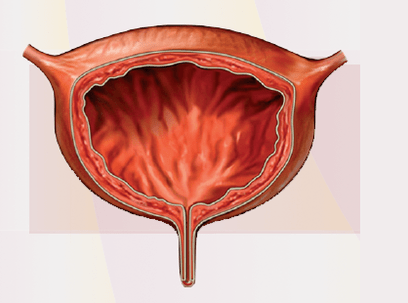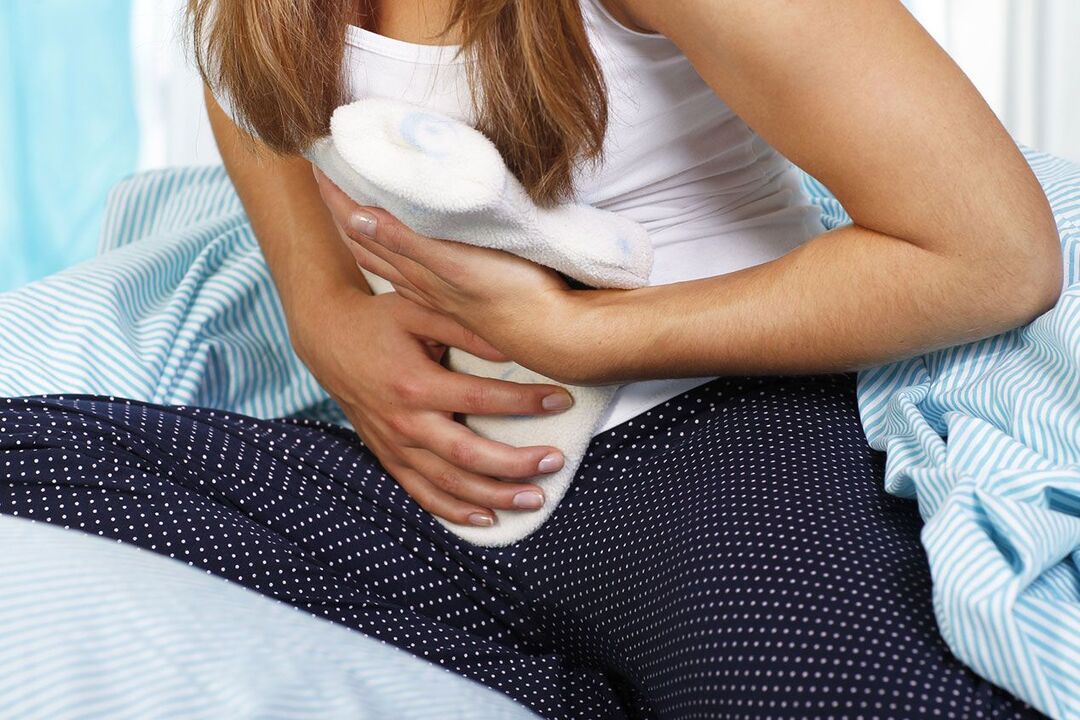Cystitis is inflammation of the walls of the bladder. Fast (every 15-20 minutes), sharply painful urination in small portions, sometimes with a mixture of blood, subfebrile body temperature. The transition of the disease to a chronic form, the increase in infection and the development of the inflammatory process in the reduction of the kidneys and the urethra. The result of urinary analysis and bladder ultrasound results in the diagnosis of cystitis. To determine the etiology of cystitis, we sow urine and lubrication from the urethra. Cystitis therapy is primarily an effective drug effect on infectious agents, which caused this.
General information
Cystitis is inflammation of the bladder mucosa membrane. In most cases, cystitis is infectious. The disease is widespread, affects the weak and stronger gender, but is more common in women due to some anatomical characteristics of women's structure.
Women's urethra (urethra) is wider and shorter than the male, so pathogens can penetrate the bladder more easily. This determines the frequency of cystitis women. Most often, women of childhood suffer from cystitis. They often occur when cystitis develops several times in a woman and significantly deteriorates the quality of their lives.
As a general rule, cystitis is conditional pathogenic plant and intestinal rods, streptococci, staphylococci, etc. It is caused by its representatives, etc.
Symptoms of cystitis
The most typical symptom of cystitis is painful urination, accompanied by the remaining feelings of combustion and rubbing. In addition, patients with cystitis are disturbed by the pain in the lower abdomen and the feeling of incomplete emptying of the bladder. Occasionally, in the case of cystitis, urine -incontinence develops, which appears with a strong urge to urinate.
Urine with cystitis can become muddy or can get a reddish shade due to contamination of red blood cells. Temperatures sometimes rise to 37, 5 degrees. An increase in cystitis temperature may indicate a potential illness of the kidneys, so in such cases it is necessary to apply urgently for qualified medical care.
The prevalence of cystitis
Acute cystitis is one of the most common urological diseases. Most often, complex cystitis is found in which the microbes only affect the mucous membrane without affecting the submucosal layer. Studies in urology show that acute cystitis falls from 26 to 36 million people per year. At the same time, the occurrence rate for women is 500-700 episodes / 1000, while the similar indicator among men aged 21-50 is only 6-8 cases / 1000.
Girls suffer three times more often in cystitis than boys. The disease is extremely rare among children aged 1-3 and 13-15 for newborns under 1 year and in children under one year. Cystitis is most common in children aged 4-12.
Chronic cystitis belongs to the number of widespread urological diseases. According to research, chronic cystitis suffers from 11-21% of the population. Significant dispersion of the data is due to a different approach to determining chronic cystitis. According to some studies, it is believed that the diagnosis of chronic cystitis should be performed if the frequency of aggravations is at least twice a year and is not determined by other aggravations.
Cystitis in the summer
It is unlikely that there is a woman who wants warm summer days to shade the joy of a unpleasant disease such as cystitis. In the meantime, especially in the summer, especially when a woman stays away from home and falls into an unusual environment, there are many causes of cystitis.
The most common causes of cystitis in the warm season:
- Childbirth in a new place during the vacation and caused problems under hygiene rules;
- Body hypothermia, due to prolonged bathing in cold water;
- Violation of the usual urination system related to flight, flight, moving or staying in a new location (under such circumstances, a woman often has to last for a long time, waiting for a comfortable event);
- A sharp change in the climate that negatively affects immunity.
Another risk factor for developing cystitis is sometimes an increase in sexual activity in the background of the conditions listed, which is unfavorable to the female body.
If your vacation, however, obscures such an unpleasant disease as cystitis, you should contact a urologist urgently. To clarify the diagnosis, ultrasound of the bladder and urine analysis should be performed. Modern antibacterial drugs can effectively affect cystitis, accelerate healing and prevent chronic transition of acute cystitis.
Contrary to drugs for the entire body of previous generations, modern antibiotics used for selective treatment of cystitis affect the inflamed tissues of the bladder, practically without affecting other organs and systems. The concentration of the drugs only reaches maximum values in the urine and in the inflamed mucosa membrane of the bladder. This can minimize the toxicological load of the body to treat cystitis and increase the effectiveness of the drugs.
Phototoxicity is an unpleasant side effect caused by many drugs to treat cystitis. Increased sunlight, redness and burns, even if they are exposed to low intensity ultraviolet rays. Due to the presence of substances in the drugs, it develops with photosensitizers and photoreactive properties. Such substances appear in the skin, which in turn causes the destruction of skin cells, inflammation and burns.
Cystitis during pregnancy
Cystitis can occur at any pregnancy. The likelihood of cystitis is increasing due to the displacement of the internal organs, which are increasingly womb, hormonal background and changes in hemodynamics. The effect of these factors causes incomplete bladder emptying and the remains of the urine in the bladder serve as a favorable environment for the formation of bacteria.
In the first signs of cystitis, a pregnant woman must have an extraordinary consultation by a gynecologist who is pregnant and tells her about the symptoms. If necessary, the doctor will give the patient guidance to the urologist.
Children's cystitis
Cystitis can develop in any age of children, but the risk of disease in old school and school age increases 5-6 times. The main causes of frequent formation of cystitis in the children of this group are many factors. Girls' ovaries have not yet begun to produce estrogens, the mucosal barrier properties are low, and the wide and short urethra allows pathogenic microorganisms to enter the bladder cavity.
The likelihood of cystitis develops in other diseases due to a decrease in immunity and the development of the favorable condition of pathogenic microbes in the urethra. In girls, the main way to prevent cystitis is to carefully follow hygiene rules.

Causes of cystitis
In 70-95% of patients with acute cystitis, the disease becomes an Egerball stick, 5-20% of patients have staphylococci and the rest act as a proe or klebsell pathogen. Cystitis is usually caused by representatives of pathogenic vegetation. With the development of cystitis due to instrumental or surgical interventions, Gram -negative bacteria often become the cause of the disease. Studies confirm that cystitis pathogens can be not only bacteria, but also viruses, mycoplasms, trichomons, chlamydia and various fungi.
The wide prevalence of cystitis in women is due to the low length of the urethra and the wide gap and its location relative to other organs. The urethra of women, unlike men, is close to the anus. The anatomical characteristics and topography of the female body contributes to the penetration of pathogens into the urethra, bladder migration and cystitis.
Cystitis in men rarely develops. The cause of cystitis in men usually becomes inflammation of the urethra, prostate gland, testicles and seed bubbles. Occasionally, the infection of the urethra is the result of cateterizing the bladder and men.
The risk of cystitis increases during bladder catheterization in men with prostate adenoma, one of the symptoms of which is a continuous delay in urine. The risk of developing cystitis is also increasing by introducing a pregnant woman's catheter, or recently gave birth to a woman due to a reduction in the sound of the urinary tract.
Treatment of cystitis
Fast cure for cystitis and complete restoration of the bladder mucosa membrane is possible by starting treatment on time and using medicines. It should be emphasized that the chances of complete release of cystitis increase with timely diagnosis and the use of drugs that are detected in the infection pathogens. Later, the beginning of treatment and prescribing drugs that only eliminate the symptoms of cystitis, without influencing the pathogenic environment, can lead to chronic transition of acute cystitis.
The main task for the doctor to treat cystitis is to destroy pathogenic microorganisms, which penetrated the bladder and caused the mucous membrane. The choice of drugs for antibacterial cystitis is determined by parameters such as the duration of the disease and the severity of the symptoms. In addition, the possible side effects, the absorption of the drug, the selection method and the speed of selection, the presence of concomitant diseases, etc.
The effectiveness of the drug in the treatment of cystitis is determined by the ability to affect certain microorganisms. It should be remembered that pathogenic bacteria are adapted and insensitive to antibiotics. Over time, the main causal agent of cystitis (E. coli) has become resistant to these drugs. In addition, drugs for treating cystitis, which were associated with an earlier generation of antibiotics, had a rather high level of toxicity and caused various side effects.
When choosing a medicine to treat cystitis, the cost of treatment should also be taken into account, which is determined not only by the cost of a tablet, but also by the real efficiency of the antibiotic, the duration of the intake and the potential risk of the patient's health. Nowadays, drugs are available for the treatment of cystitis, which selectively affects the disease pathogens. In the body, the drug is concentrated in the bladder, which allows it to increase its effectiveness. In addition, the use of the latest generation antibiotics ensures reducing the treatment of cystitis, reduces the likelihood of side effects and reduces the risk of the patient's body.
In the treatment of cystitis, fatty and spicy foods should be excluded from the diet, the fluid intake should be increased and the hypothermia should be avoided. A warm heating bench on the lower abdomen helps cystitis. Complex treatment of cystitis is possible for ionoporesis, UHF or inductotermia. We must not forget that physiotization and thermal procedures are contraindicated in the presence of certain gynecological diseases.
Useful tips to prevent cystitis:
- Try to avoid hypothermia.
- Despite the circumstances, follow the rules of personal hygiene.
- Use neutral economical detergents for hygiene procedures.
- During menstruation, change hygiene seals in time.
- Empty the bladder in time.
- Increase the fluid intake.
- Excessive, fitting clothes can exacerbate blood circulation in the pelvis, so it is better to deny such clothes.
- Try to normalize the work of the bowel. The tendency of constipation should increase the share of fresh fruits and vegetables in the diet.
























